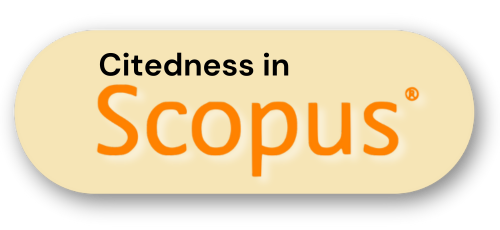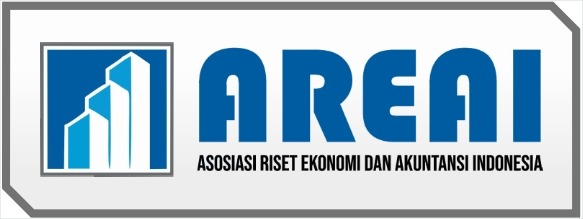Knowledge Management System: Organizational Innovation as a Solution for Dispersed Work, Tacit and Common Knowledge
DOI:
https://doi.org/10.61194/economics.v2i1.150Keywords:
KM System, Solution, Innovation, Tacit KnowledgeAbstract
When managed well, an organization's workforce's diversity of abilities may be a huge strategic advantage, fostering innovation and aiding in problem-solving abilities. Employers may encounter difficulties when employees work remotely and possess implicit knowledge. It is possible to transform seemingly ordinary knowledge into extraordinary knowledge when trustworthy management is in place. Using a qualitative descriptive method, this research attempts to examine the best knowledge management concepts, particularly those linked to tacit knowledge management. In order to obtain relevant and reliable results, we employ discourse analysis and narrative analysis procedures after accumulating data from literature, articles, and prior study notes using documentation techniques. This will also assist in developing the concept into a large, clear, and understandable thought. These results suggest that only in organizations with robust knowledge management systems can organizational innovation and issue solving take place. These results support the knowledge management hypothesis and offer further evidence that entrepreneurs can overcome the challenges posed by distant workers who possess tacit knowledge by maximizing knowledge management.
References
Abdillah, M. R. (2021). Leader Humor and Knowledge Sharing Behavior: The Role of Leader-Member Exchange. Jurnal Manajemen, 25(1), 76. https://doi.org/10.24912/jm.v25i1.704 DOI: https://doi.org/10.24912/jm.v25i1.704
Ain, N. U., Azeem, M. U., Sial, M. H., & Arshad, M. A. (2022). Linking knowledge hiding to extra-role performance:The role of emotional exhaustion and political skills. Knowledge Management Research and Practice, 20(3), 367–380. https://doi.org/10.1080/14778238.2021.1876536 DOI: https://doi.org/10.1080/14778238.2021.1876536
Alainati, S. J. (2022). Towards a Comprehensive Knowledge Management- Competency Model. July, 10–23. https://doi.org/10.9790/487X-2311031123 DOI: https://doi.org/10.24940/theijbm/2022/v10/i4/BM2204-013
Alavi, & Leidner. (2001). Knowledge Management and Knowledge Management Systems : Conceptual Foundations and Research Issues By Maryam Alavi Orkand Professor of Information Systems Robert H . Smith School of Business University of Maryland College Park , MD 20742 and Boulevard de. MIS Quarterly, 107–136. DOI: https://doi.org/10.2307/3250961
Alonso, R., Dessein, W., & Matouschek, N. (2008). When does coordination require centralization? American Economic Review, 98(1), 145–179. https://doi.org/10.1257/aer.98.1.145 DOI: https://doi.org/10.1257/aer.98.1.145
Assudani, R. H. (2009). Dispersed knowledge work - implications for knowledge intensive firms. Journal of Knowledge Management, 13(6), 521–532. https://doi.org/10.1108/13673270910997169 DOI: https://doi.org/10.1108/13673270910997169
Busho, N., & Lena, D. (2020). Exploitative Innovation and the Impact of Realized Absorptive Capability and Technology Orientation. European Journal of Social Science Education and Research, 7(3), 146. https://doi.org/10.26417/237kvr77y DOI: https://doi.org/10.26417/237kvr77y
Carneiro, A. (2000). How does knowledge management influence innovation and competitiveness? Journal of Knowledge Management, 4(2), 87–98. https://doi.org/10.1108/13673270010372242 DOI: https://doi.org/10.1108/13673270010372242
Castaneda, D. I., & Toulson, P. (2021). Is it possible to share tacit knowledge using information and communication technology tools? Global Knowledge, Memory and Communication, 70(8–9), 673–683. https://doi.org/10.1108/GKMC-07-2020-0102 DOI: https://doi.org/10.1108/GKMC-07-2020-0102
Cecchi, M. A., Grant, S., Seiler, M., Turner, N., Adams, R., & Goffin, K. (2022). How COVID-19 Impacted The Tacit Knowledge and Social Interaction of Global NPD Project Teams: The complexity framework offers managers an effective way to analyze problems and to generate solutions to manage tacit knowledge and social interaction in dispe. Research Technology Management, 65(2), 41–52. https://doi.org/10.1080/08956308.2022.2020566 DOI: https://doi.org/10.1080/08956308.2022.2020566
De Silva, M., Howells, J., & Meyer, M. (2018). Innovation intermediaries and collaboration: Knowledge–based practices and internal value creation. Research Policy, 47(1), 70–87. https://doi.org/10.1016/j.respol.2017.09.011 DOI: https://doi.org/10.1016/j.respol.2017.09.011
Dixon, S., Meyer, K., & Day, M. (2014). Building dynamic capabilities of adaptation and innovation: A study of micro-foundations in a transition economy. Long Range Planning, 47(4), 186–205. https://doi.org/10.1016/j.lrp.2013.08.011 DOI: https://doi.org/10.1016/j.lrp.2013.08.011
Earl, M. (2001). Knowledge management strategies: Toward a taxonomy. Journal of Management Information Systems, 18(1), 215–233. https://doi.org/10.1080/07421222.2001.11045670 DOI: https://doi.org/10.1080/07421222.2001.11045670
Edvinsson, L., Dvir, R., Roth, N., & Pasher, E. (2004). Innovations: The new unit of analysis in the knowledge era: The quest and context for innovation efficiency and management of IC. Journal of Intellectual Capital, 5(1), 40–58. https://doi.org/10.1108/14691930410512914 DOI: https://doi.org/10.1108/14691930410512914
Hicks, R. C., Dattero, R., & Galup, S. D. (2006). The five-tier knowledge management hierarchy. Journal of Knowledge Management, 10(1), 19–31. https://doi.org/10.1108/13673270610650076 DOI: https://doi.org/10.1108/13673270610650076
Hock-Doepgen, M., Clauss, T., Kraus, S., & Cheng, C. F. (2021). Knowledge management capabilities and organizational risk-taking for business model innovation in SMEs. Journal of Business Research, 130(December), 683–697. https://doi.org/10.1016/j.jbusres.2019.12.001 DOI: https://doi.org/10.1016/j.jbusres.2019.12.001
Hornung, O., & Smolnik, S. (2022). At the mercy of our emotions? A multi-dimensional analysis of emotions in knowledge management research. Knowledge and Process Management, 29(2), 109–120. https://doi.org/10.1002/kpm.1701 DOI: https://doi.org/10.1002/kpm.1701
Hult, G. T. M., Ketchen, D. J., Cavusgil, S. T., & Calantone, R. J. (2006). Knowledge as a strategic resource in supply chains. Journal of Operations Management, 24(5), 458–475. https://doi.org/10.1016/j.jom.2005.11.009 DOI: https://doi.org/10.1016/j.jom.2005.11.009
Hwang, S. (2022). Sharing tacit knowledge in small-medium regional construction companies in the U.S.: the current status and the impact of organizational ecology. International Journal of Construction Management, 22(9), 1746–1755. https://doi.org/10.1080/15623599.2020.1742628 DOI: https://doi.org/10.1080/15623599.2020.1742628
Jansen, J. J. P., & Volberda, F. A. J. V. den B. H. W. (2003). Managing potential and realized absorptive capacity: Antecedents and consequences. In DRUID Conference on Creating, Sharing, and Transferring Knowledge, 29(1), 1–31.
Lee, M. H., Yun, J. H. J., Pyka, A., Won, D. K., Kodama, F., Schiuma, G., Park, H. S., Jeon, J., Park, K. B., Jung, K. H., Yan, M. R., Lee, S. Y., & Zhao, X. (2018). How to respond to the Fourth Industrial Revolution, or the second information technology revolution? Dynamic new combinations between technology, market, and society through open innovation. Journal of Open Innovation: Technology, Market, and Complexity, 4(3). https://doi.org/10.3390/joitmc4030021 DOI: https://doi.org/10.3390/joitmc4030021
March, J. G. (1991). Exploration and exploitation in organizational learning. Organization Science, 2(1), 71–78. https://doi.org/https://doi.org/10.1287/orsc.2.1.71 DOI: https://doi.org/10.1287/orsc.2.1.71
Nag, R., & Gioia, D. A. (2012). From common to uncommon knowledge: Foundations of firm-specific use of knowledge as a resource. Academy of Management Journal, 55(2), 421–457. https://doi.org/10.5465/amj.2008.0352 DOI: https://doi.org/10.5465/amj.2008.0352
Ngah, R., & Wong, K. Y. (2020). Linking knowledge management to competitive strategies of knowledge-based SMEs. Bottom Line, 33(1), 42–59. https://doi.org/10.1108/BL-08-2019-0105 DOI: https://doi.org/10.1108/BL-08-2019-0105
Nonaka, I., & von Krogh, G. (2009). Tacit knowledge and knowledge conversion: Controversy and advancement in organizational knowledge creation theory. Organization Science, 20(3), 635–652. https://doi.org/10.1287/orsc.1080.0412 DOI: https://doi.org/10.1287/orsc.1080.0412
Peng, X., Mai, C., Khamaksorn, A., Mai, C., Nimmolrat, A., & Mai, C. (2020). Effective F actors in B ehavioral E conomies and O rganizational M anagement — b ased on the Knowledge Management Context. 2020 Joint International Conference on Digital Arts, Media and Technology with ECTI Northern Section Conference on Electrical, ECTI DAMT & NCON, 352–357. DOI: https://doi.org/10.1109/ECTIDAMTNCON48261.2020.9090723
Polanyi, M. (1966). The Tacit dimension. In Garden City. Garden City. https://doi.org/10.1353/ppp.2002.0018 DOI: https://doi.org/10.1353/ppp.2002.0018
Riaz, H., & Hassan, A. (2019). Mediating role of organizational creativity between employees’ intention in knowledge management process and organizational performance: Empirical study on pharmaceutical employees. Pakistan Journal of Commerce and Social Science, 13(3), 635–655.
Tien, H. K., Chang, B. L., & Kuo, Y. K. (2019). Does experience stimulate or stifle creativity? European Journal of Innovation Management, 22(3), 422–445. https://doi.org/10.1108/EJIM-02-2018-0042 DOI: https://doi.org/10.1108/EJIM-02-2018-0042
Tushman, M. L., & O´Reilly, C. A. (1996). Managing Evolutionary and Revolutionary Change. California Review Management, 38(4), 8–29. DOI: https://doi.org/10.2307/41165852
Wang, Y., Yu, S., & Xu, T. (2017). A user requirement driven framework for collaborative design knowledge management. Advanced Engineering Informatics, 33, 16–28. https://doi.org/10.1016/j.aei.2017.04.002 DOI: https://doi.org/10.1016/j.aei.2017.04.002






